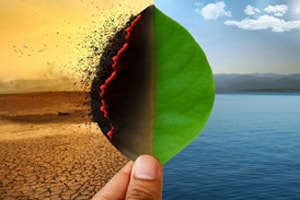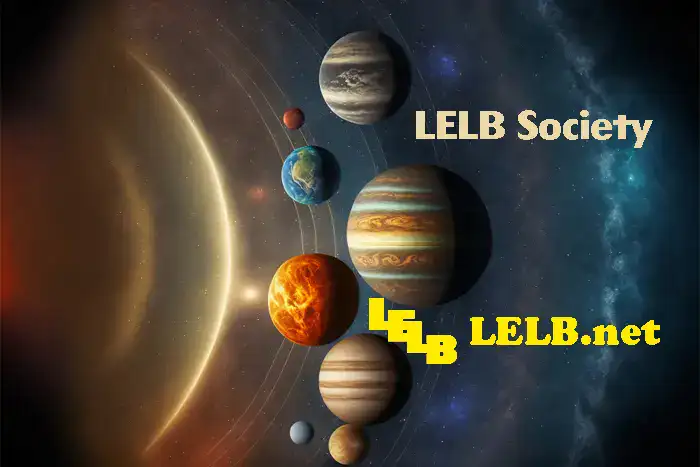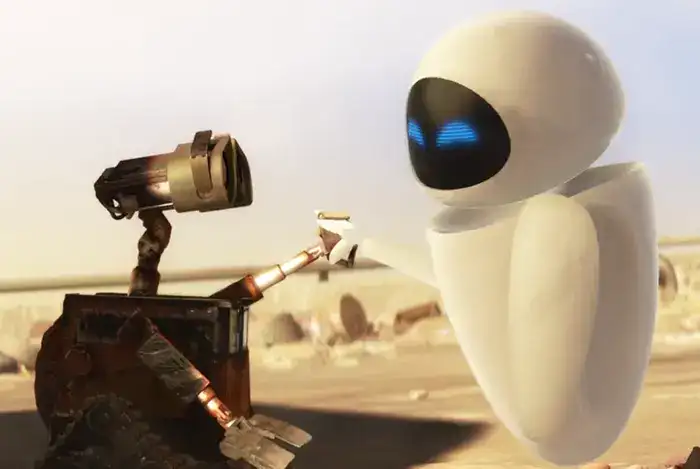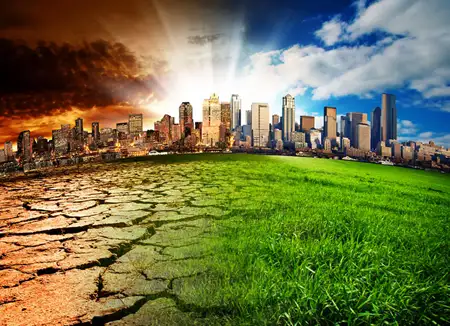Practice Reading & Listening on Climate
Practice Reading & Listening on Climate for IELTS & TOEFL with illustrated flashcards, a podcast as a documentary from National Geographic YouTube Channel and text-to-speech transcribed by Mahsa Mohammadi
The ozone layer
15 to 35 kilometers above Earth’s surface, a gas called ozone surrounds the planet. The ozone layer acts as a barrier between Earth and ultraviolet radiation from the Sun. However, pollution has caused the ozone layer to thin, exposing life on Earth to dangerous radiation.
Function of the ozone layer
Earth’s atmosphere is made up of 6 layers. The second layer, called the stratosphere, contains the ozone layer. The ozone layer is made up of a highly reactive molecule called ozone, which contains three oxygen atoms. Ozone is a trace gas in the atmosphere; there are only about three molecules for every ten million molecules of air, but it does a very important job. The ozone layer acts as Earth’s sunscreen, absorbing about 98% of damaging ultraviolet or UV light.
What are CFCs?
But the ozone layer has gotten thinner. Chemicals called chlorofluorocarbons or CFCs are the primary culprits in ozone layer breakdown. A CFC is a molecule that contains the elements carbon, chlorine, and fluorine. CFCs are mostly found in refrigerants, aerosols, and plastic products. When CFCs are exposed to ultraviolet rays in the atmosphere, they break down into substances that include chlorine. The chlorine reacts with the oxygen atoms in ozone and rips apart the ozone molecule.
Ozone layer damage
Areas of damage in the ozone layer are often called ozone holes, but that name is misleading. Ozone layer damage is more like a thin patch, with the thinnest areas near the poles. The ozone layer above the Antarctic, in particular, has been impacted by pollution since the mid-1980s. There, the region’s low temperatures speed up the conversion of CFCs to ozone-damaging chlorine. About 90% of CFCs currently in the atmosphere were emitted by industrialized countries in the northern hemisphere.
In 1989, the Montreal Protocol banned the production of ozone-depleting substances. Since then, the amount of chlorine and other ozone-depleting elements in the atmosphere have been falling. Scientists estimate that chlorine levels will return to their natural state in about 50 years. By then, the Antarctic ozone hole will shrink to smaller than 8 million miles.




We used to learn about the ozone layer and its important job back in high school. Climate change has become one of the most serious issues in the last decades. We should pay more attention to the Earth and the environment.
It seems that we, humans, cannot fully digest this important point that the environment and the earth are in fact our home. Climate change, global warming, deforestation, sea level rise and some other related life-threatening phenomena are not simply myths to ignore.
15 to 35 kilometers above Earth’s surface, a gas called ozone surrounds the planet. The ozone layer acts as a barrier between Earth and ultraviolet radiation from the Sun. However, pollution has caused the ozone layer to thin, exposing life on Earth to dangerous radiation.
Earth’s atmosphere is made up of 6 layers. The second layer, called the stratosphere, contains the ozone layer. The ozone layer is made up of a highly reactive molecule called ozone, which contains three oxygen atoms. Ozone is a trace gas in the atmosphere; there are only about three molecules for every ten million molecules of air, but it does a very important job. The ozone layer acts as Earth’s sunscreen, absorbing about 98% of damaging ultraviolet or UV light.
But the ozone layer has gotten thinner. Chemicals called chlorofluorocarbons or CFCs are the primary culprits in ozone layer breakdown. A CFC is a molecule that contains the elements carbon, chlorine, and fluorine. CFCs are mostly found in refrigerants, aerosols, and plastic products. When CFCs are exposed to ultraviolet rays in the atmosphere, they breakdown into substances that include chlorine. The chlorine reacts with the oxygen atoms in ozone and rips apart the ozone molecule.
Areas of damage in the ozone layer are often called ozone holes, but that name is misleading. Ozone layer damage is more like a thin patch, with the thinnest areas near the poles. The ozone layer above the Antarctic, in particular, has been impacted by pollution since the mid-1980s. There, the region’s low temperatures speed up the conversion of CFCs to ozone-damaging chlorine. About 90% of CFCs currently in the atmosphere were emitted by industrialized countries in the northern hemisphere.
In 1989, the Montreal protocol banned the production of ozone-depleting substances. Since then, the amount of chlorine and other ozone-depleting elements in the atmosphere have been falling. Scientists estimate that chlorine levels will return to their natural state in about 50 years. By then, the Antarctic ozone hole will shrink to smaller than 8 million miles2.
Thank you for your transcription. The only problem found in your transcription is the phrasal verb “break down” which was regarded as a noun without any space.